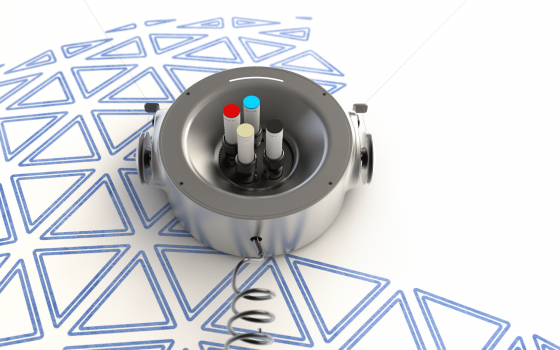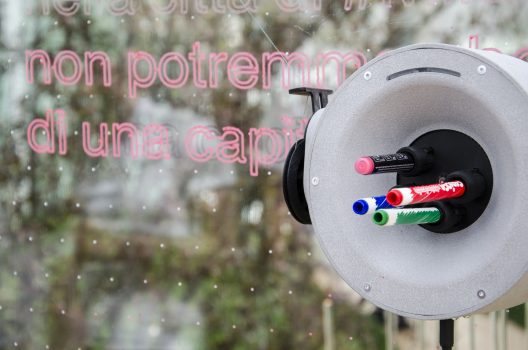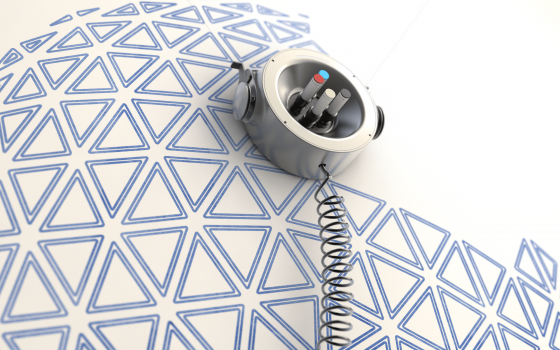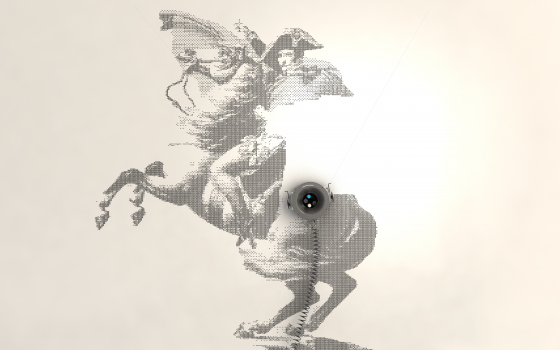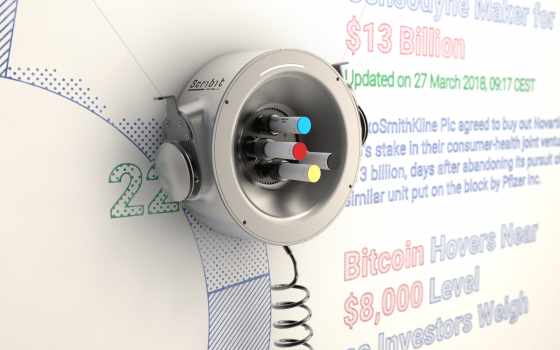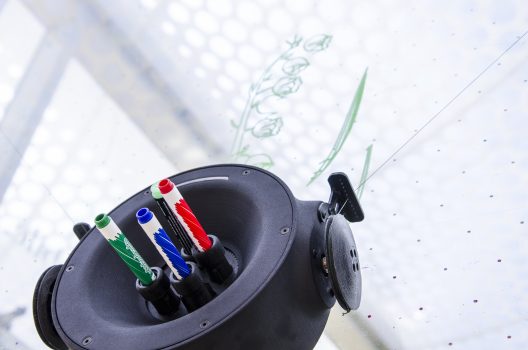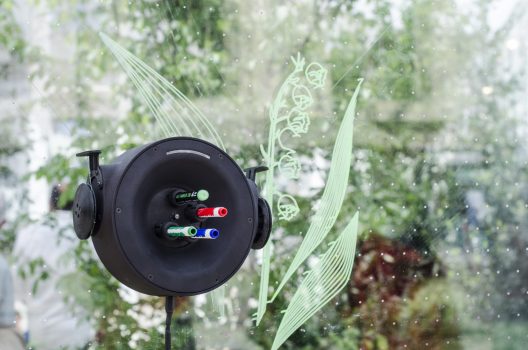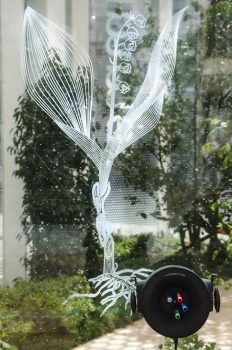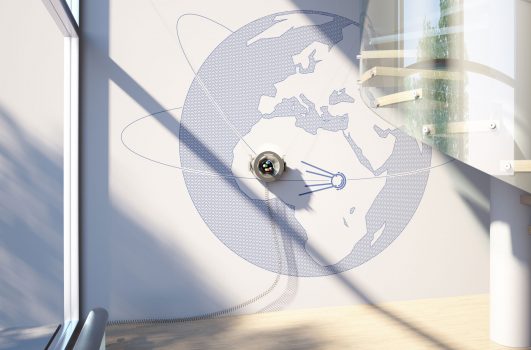What if you could instantly turn your office or living room wall into a canvas for digital content, and update it in real time? International design and innovation office CRA-Carlo Ratti Associati unveils Scribit, an intelligent small writing robot that ushers in a new way of presenting digital content, and makes it possible to instantly reconfigure and personalize a wall – whether it’s a storefront, an office lobby or your living room. Scribit was first unveiled in Milan, Italy on 16 April 2018 during Salone del Mobile, the world’s leading design event. A subsequent crowdfunding campaign, launched in June 2018, raised $1.6 million to kick off the production.
With its in-built engines, Scribit can be installed in less than 5 minutes: all that is needed are two nails and a power plug. Furthermore, thanks to a special patented technology, Scribit can safely draw, cancel and re-draw new content an infinite number of times, allowing you to print a different image on your wall every day or even every few minutes. Scribit can travel on every kind of vertical surface, from whiteboards to glass or plaster. Thus, any vertical surface can be transformed into a screen – a wonder wall where images, messages or feeds are projected.
Scribit is always connected to the web, meaning that you can download, upload or source any content from the Internet. A restaurant can post the day’s menu on its wall, a financial firm can post stock market updates in its lobby, or someone who loves art can project a Van Gogh – or their own drawings – onto their bedroom wall. Scribit’s interactive software allows the real-time reproduction of any kind of data, including notes, messages, pictures and graphics. Once the user sends their digital information to the device, the plotter immediately reproduces it.
“We are totally deluged with information, and spend too much of our non-sleeping time in front of one form or other of digital screen – TV, desktop computer, laptop, tablet or phone. Do we really want to add more screens to our lives?” says Carlo Ratti, founding partner of CRA and director of the MIT Senseable City Lab at the Massachusetts Institute of Technology (MIT): “Scribit offers an alternative: a robotic system that draws on any kind of vertical surface, following a primordial act performed by humanity since our first cave graffiti.”
Scribit will offer users access to a broad range of digital content structured around mini Apps. In this global marketplace, people, businesses or institutions – from artists, to museums, to media organizations – can develop and upload any type of content.
Scribit, which means “s/he writes” in Latin, stems from a long investigation of writing machines developed at CRA’s practice. This includes the installation OSARCH at the 2011 Istanbul Design Biennale, the façade of the Future Food District at Milan’s World Expo 2015 (selected by Guiness World Records as the largest image ever plotted) – and, more recently, UFO-Urban Flying Opera, a project in which a fleet of painting drones is employed to draw a collectively-sourced image. All these projects can be seen as interpretations to the idea of “tangible bits” developed by MIT Professor Hiroshi Ishii: they bring together the best of both the digital and the physical worlds.
For more information and to stay updated on Scribit’s launch: www.scribit.design
